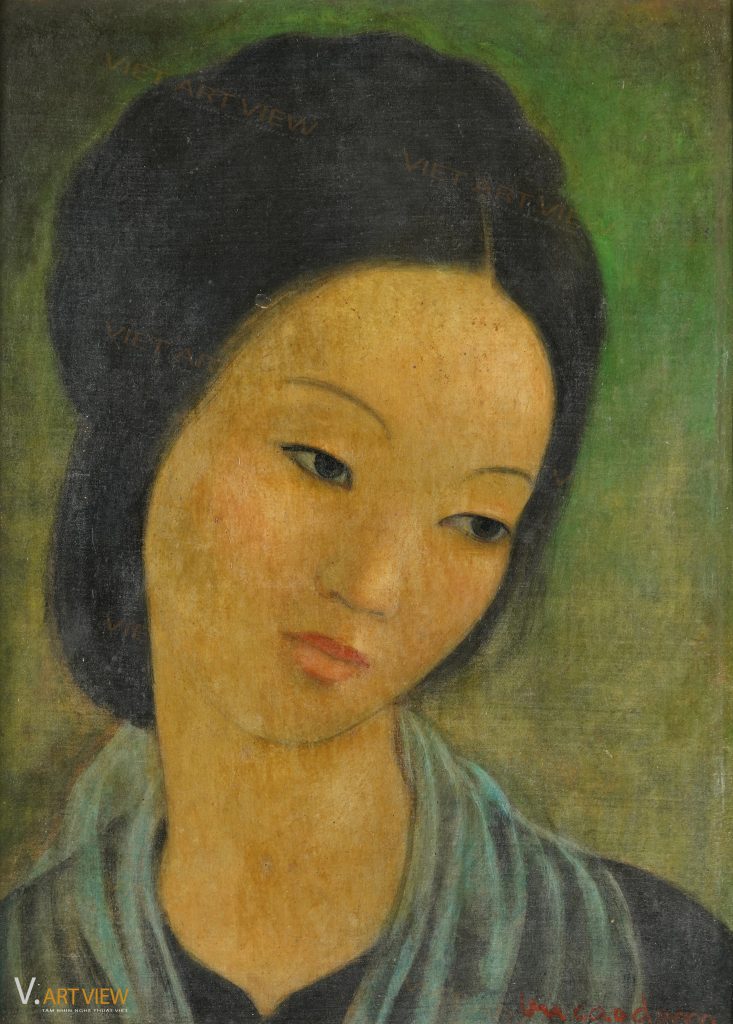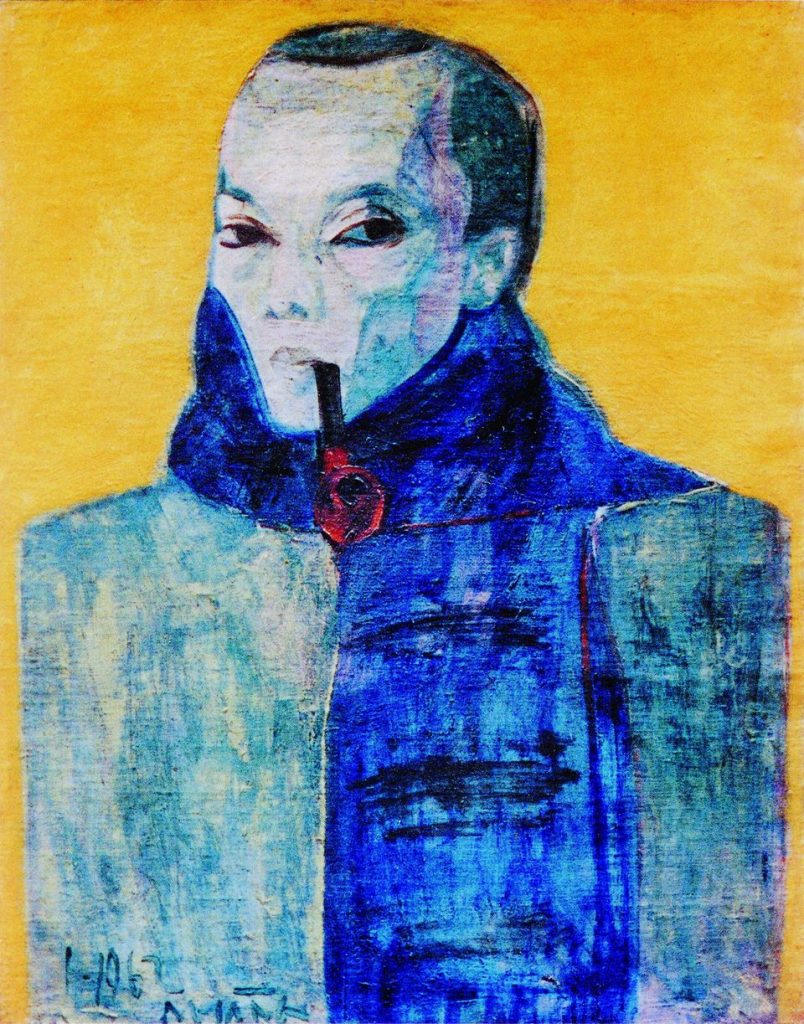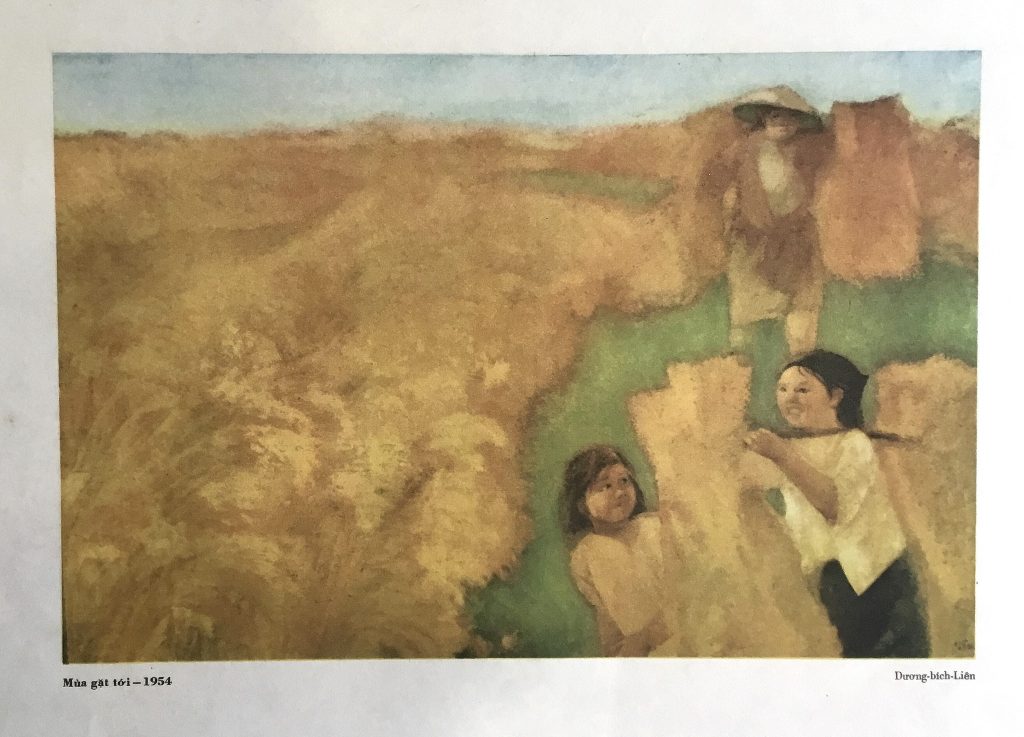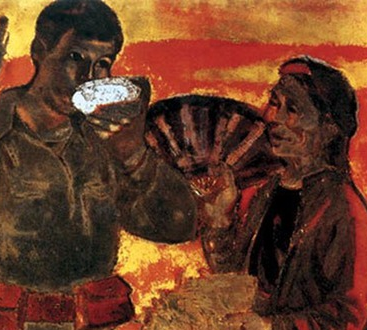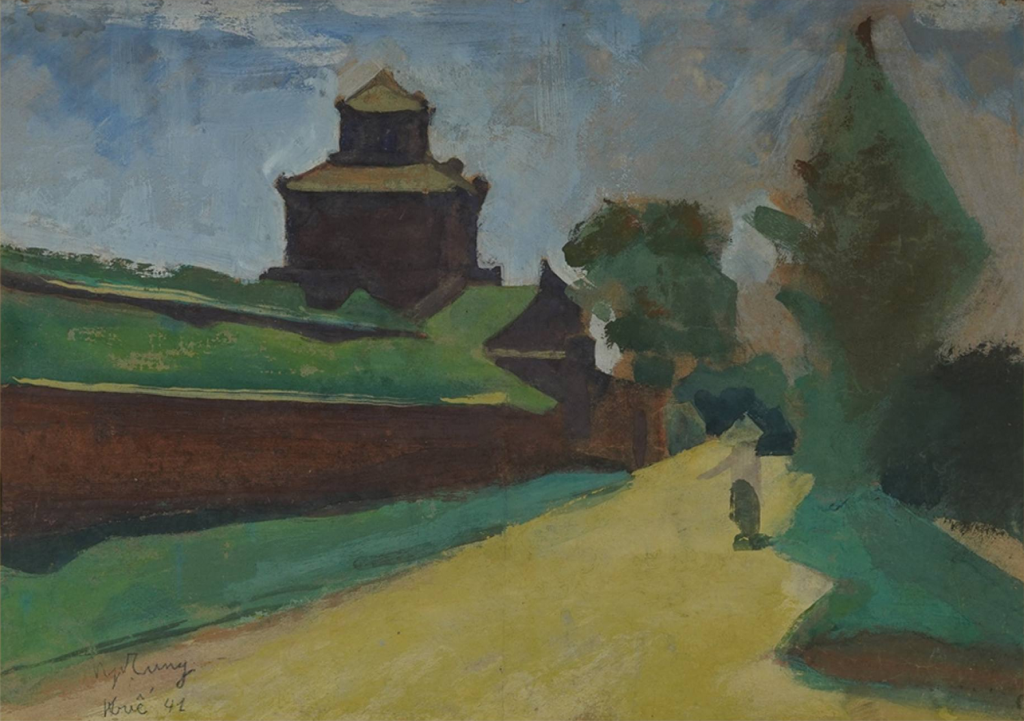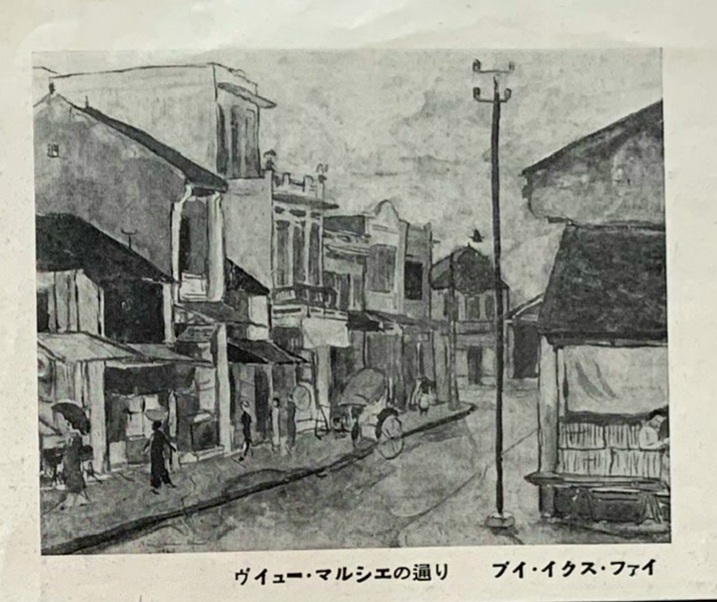The exact geographical position of this picture is seen from the even-numbered side towards the Lo Duc – Tran Xuan Soan crossroads, on the beautiful, straight line of ‘sao đen’ trees [Hopea odorata] extending from no. 1 to no. 77 (odd number side with the famous brand ‘Phở Thìn’ [Thin Noodle] no. 13 Lo Duc street, bring a feeling of closeness to nature, shade the whole neighborhood…
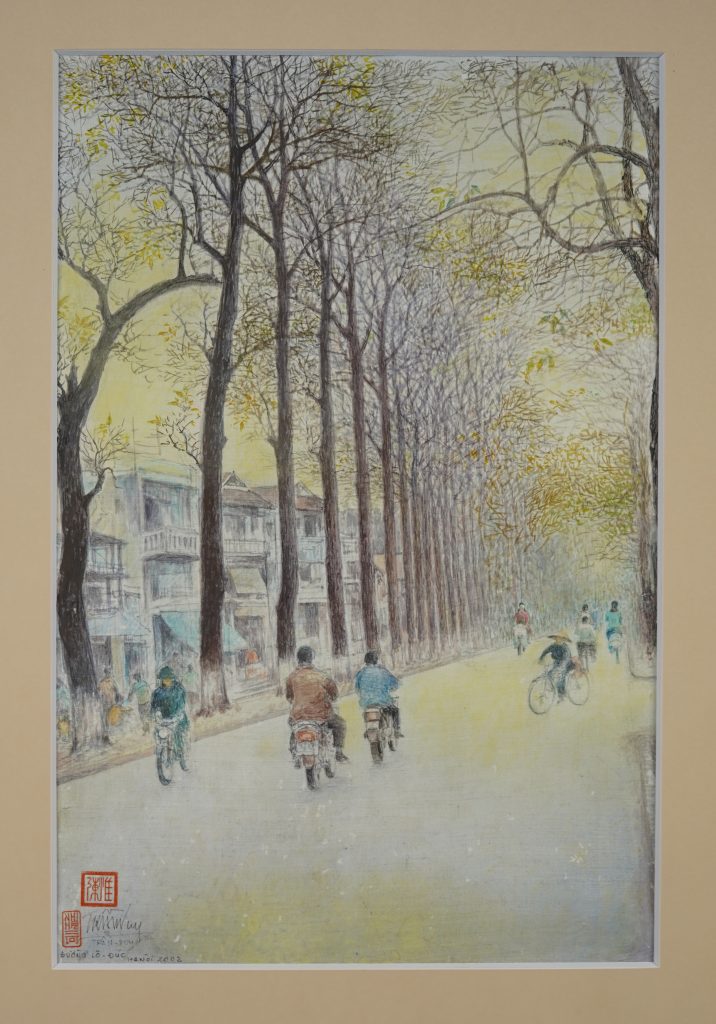
Tran Duy (Tran Quang Tang, 1920 – 2014) ‘Lo Duc street’ 2002. Silk. 53x36cm
The painting “Lo Duc Street” was created by artist Tran Duy in the winter of 2002, exactly 20 years ago. At that time, he was still living in a house in Kieu Ky, Gia Lam. The house at that time had already passed to the new owner, but he was still there temporarily. In 2003, he moved to Doi Can Street. The owner of the house on Doi Can Street is the same person who bought his house in Kieu Ky village.
The moment he decided to sell the house in Kieu Ky to move to Saigon was when his soul and emotions were warped by a private love story. During his stay in the sold house in Kieu Ky, painter Tran Duy was loved by two young people who are the children of the new owner. The landlord’s son took the artist by motorbike to many places for him to admire and paint. In addition to the inner city, the villages on the outskirts of Hanoi are familiar and favorite places of his, the two of them even went to Hue, and then back to Trang An-Ninh Binh, Tam Dao… for him to enjoy scenes, sketch, record for painting.
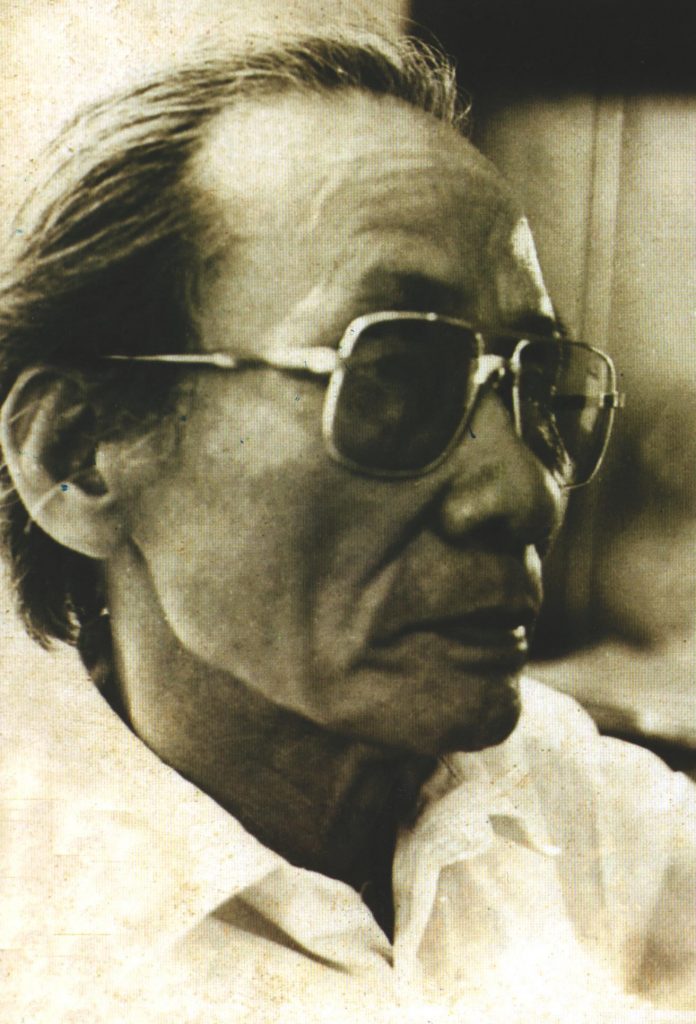
Portrait of artist Tran Duy (Tran Quang Tang, 1920 – 2014)
Because of the sincere affection of the new owner’s family and some emotional events, he decided to stay in Hanoi. At the same time, he created a few more paintings of winter on silk like “Winter Indian Almond”; “Yen Phu in winter”; “Hoa sưa” [Dalbergia tonkinensis]; “Yen Phu in autumn”, in the Botanical Garden. At that time, because his psychology was not well, he often paint about winter, as if to express his own loneliness.
Painter Tran Duy, real name Tran Quang Tang, was born in 1920, in Hue, in a family of functionary. After completing his bachelor’s degree at Khai Dinh School (Philosophy Department), he studied painting at Indochina Fine Arts College. In 1945, he participated in Viet Minh activities; 1946 participated in fighting Gia Lam Airport. During the resistance war against the French, he worked at the Area 10, Propagandize the Enemy Department, participated in the newspaper “National Guard”, “Enjoy living”, propagandize the enemy in the Road 4 Campaign. He was a true revolutionary activist.
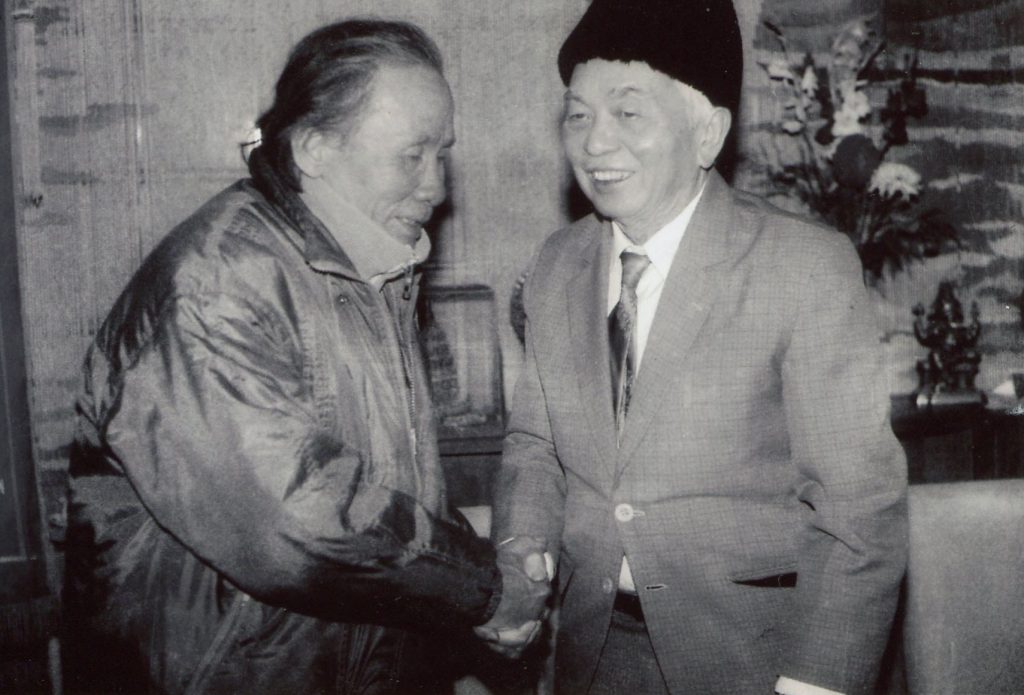
Đại Tướng Võ Nguyên Giáp và họa sĩ Trần Duy
Painter Tran Duy, as secretary of the editorial office of the newspaper “Humanism” was present in the list of the movement “Humanist – Great works”. This had a huge impact on his life and his family too. He lived, worked, and created in an “invisible control” by the very phrase “Humanist – Great works”.
Painter Tran Duy chose for himself a quiet, patient, leisurely and peaceful lifestyle to work. He created thousands of paintings, making his name with famous landscape silk paintings.
In order to have documents, the young man took him to Lo Duc street many times for him to take notes and sketch. The work “Lo Duc street” was born from those sketches recorded directly, not copied from photos. The painting depicts the scene of Lo Duc street in the winter of 2002. The row of ‘sao đen’ trees stand straight, steady, the trunk is stocky, tall, high with winter characteristics of slender, thin branches, few leaves… The row of precious and cool trees are the symbol of Lo Duc street, don’t know what year they were planted. Many people estimate that this row of ‘sao đen’ trees is older than a human life…

At the end of Lo Duc street, the crossroad with Tran Khat Chan and Kim Nguu streets is O Dong Mac, one of the five gates of Hanoi… With “Lo Duc Street” he used his forte of meticulous, simple and rustic silk painting style but still clever and talented; the brush tips are soft, skillfully interwoven like carpet weaving. It is a system of subtle strokes, both descriptive and suggestive in succession. Soft colors are just enough to create a sense of color for the painting space to become warm and emotional.
This may be the only painting of Lo Duc street by artist Tran Duy. He chose Lo Duc because in those years there seemed to be a project to cut down the row of ‘sao đen’ trees. Therefore, he decided to paint it to save.
His landscape paintings are diverse, rich but most focused on the places he loves and attaches to. It is Trang An, Ninh Binh with picturesque Tam Coc – Bich Dong. Those are the streets of Hanoi, especially the poetic Yen Phu street, transforming the scenery through the seasons. It is the rustic village of Thuy Linh, Thanh Tri, one of the houses where he used to live for a while during his relocation to different places of residence.

Later, the work “Lo Duc street” was given by him to a “security friend”, who was assigned the task of “exploring”, everything related to his ‘political thought’ for many years. This friend, in addition to the main task assigned, in the course of professional activities, has become best friend and close to him like a soul mate, understanding him. They actually became friends…
Ethnologist Tu Chi, a close friend of painter Tran Duy wrote about him as follows: “The image that appears in his paintings is the image of the country, the shadow of the past but at the same time the eternal tradition of the nation. He always clings to that… It’s because he paints very real, not fake, doesn’t fool himself, and doesn’t accidentally fool others.”

Painter Tran Duy is a realist – romantic painter. He was born into a family with royal roots in the Hue royal family, attended French schools, good at French, profound art theory research system, participated in revolutionary activities, but also encountered a reputation in terms of ideology. All of this has created a delicate, romantic, quiet, gentle, and very like-in-life painter Tran Duy…
Documents about artist Tran Duy still have much to write, Viet Art View would like to save it for the introduction of the next works in the creative legacy he left behind. This article only tells a very small aspect of the circumstances of the painting’s birth…
By Viet Art View
Copyright belongs to Viet Art View


